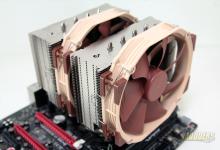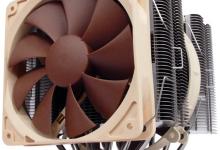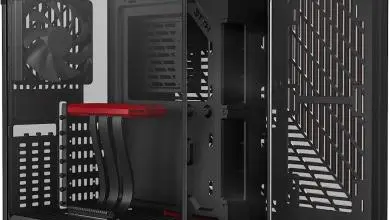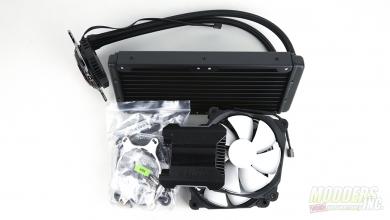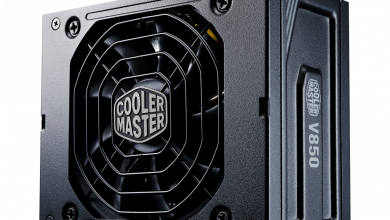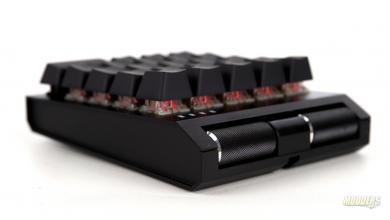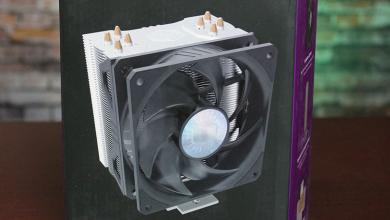Cooler Master V10 Hybrid T.E.C. CPU Cooler
Observation |
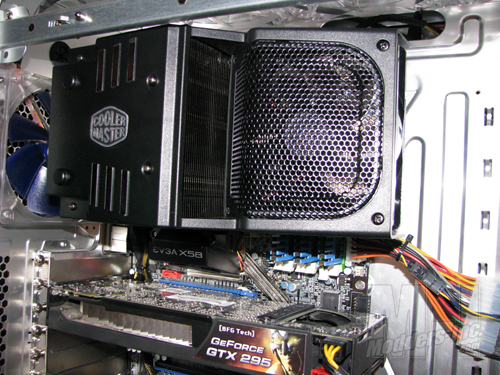 Looking at the upper section once the installation is complete. You can see that the Cooler Master V10 easily covers the top half of the motherboard and its components. So before spending your hard earned cash on a large cooler like the V10, make sure you have the appropriate mounting space to install it. Nothing would suck more than spending a considerable amount of cash on a high end cooler than not being able to install it.
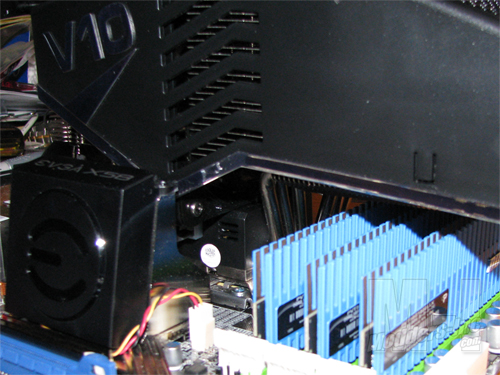 Also make sure to keep in mind that clearance issues for your memory modules. As you can see above, we do have a little room above the Patriot Viper modules, but you might be more cramped with the Corsair Dominators, or OCZ Reapers to name a few of the other tall modules. The Test Rig: Intel Core i7 920 @ 2.66GHz ~ 3.875GHz Testing: To load the CPU core(s), I will run Prime 95 v25.8 Build 4 for no less than 30 minutes to achieve a full load on all cores. During this time I will be using Everest Ultimate v5.00.1650 to record the minimum and maximum temperatures achieved during the test. I will be testing at 6 different levels (CPU Frequencies) for each cooler tested. This will show us how the cooler performs at different overclocks and how well it scales up with the increased temperatures those overclocks present. Level 1: 2.66 GHz (Defualt) All fans set to 100% 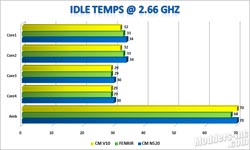 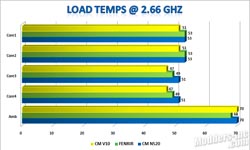 Level 2: 2.78 GHz (5% OC) All fans set to 100% 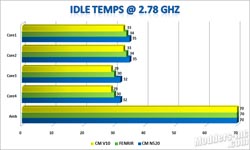 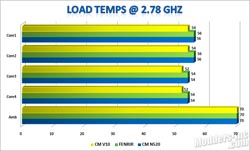 Level 3: 3.05 GHz (15% OC) All fans set to 100% 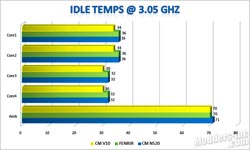 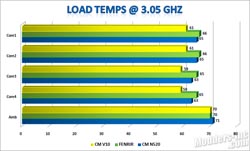 Level 4: 3.33 GHz (25% OC) All fans set to 100% 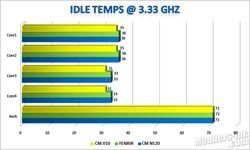 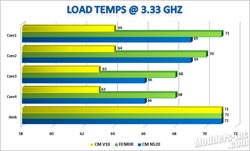 Level 5: 3.60 GHz (35% OC) All fans set to 100% 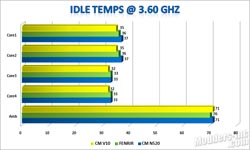 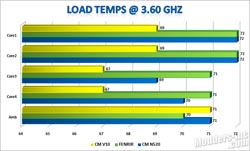 Level 6: 3.87 GHz (45% OC) All fans set to 100% 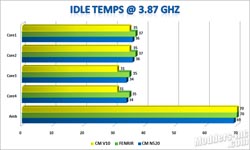 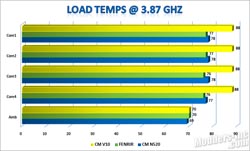 Looking at the above graphs we can see how each of the coolers I tested performed at each level. I used a Titan Fenrir TTC-NK85TZ cooler, and a Cooler Master Hyper-N520 as comparison coolers. The Titan cooler was in stock form, but the Cooler Master N-520 is using Gelid thermal paste, and two of Gelid’s Wing9 Blue UV fans. To provide as accurate results as possible, each cooler was mounted and tested multiple times. The results shown are the averages of those tests. Starting off with the review, I wasn’t to sure how well the Cooler Master V10 would perform. Most of the TEC/Air coolers that have previously populated the market, had the TEC right at the base of the cooler, and shown some significant results. With the TEC being located off to the side, I expected the differences not to be as drastic as previous TEC coolers. Looking at the above charts we can see that on the idle side, the V10 gave us a few degrees better idle temperature. On the load side, we seen as high as 7 degrees improvement on one of the cores. Once we hit the 3.87 GHz mark, we see a drastic change. The V10 maxed us out at 88 degrees Celcius on all four cores, which was a bit disappointing. I was more impressed with the improved performance I saw in the Cooler Master Hyper N-520 after the fan and paste change, but we will leave that for another review. As I have stated, I have done multiple installs with each of these coolers. Out of the three coolers, the V10 was the loudest cooler, but not by a lot. All three coolers fell within my acceptable range. None of them come close to producing the sounds that I hear when I fire up my Green Flame mod. Being a single fan design, the Titan Fenrir had the advantage when it came noise. |
